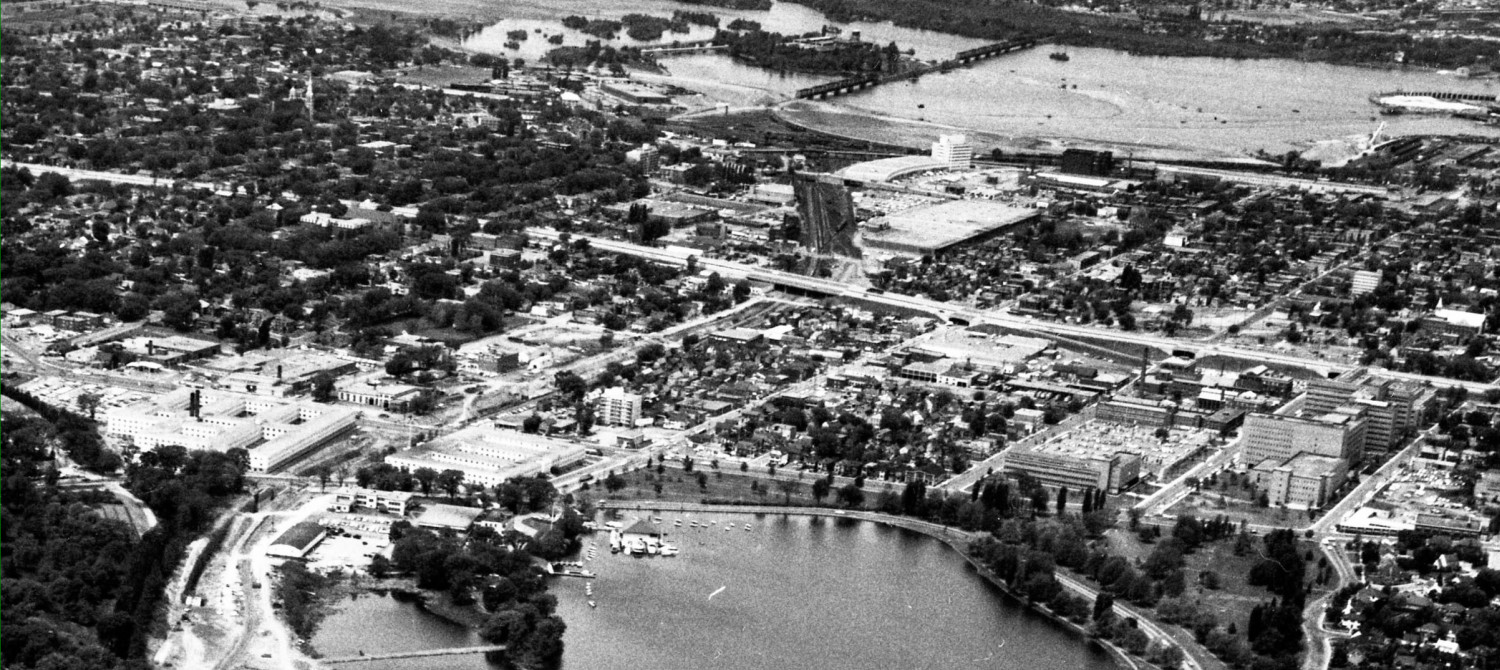From time to time community groups advocate for road traffic changes. These are often to reduce through traffic (ie, people going from “not here” to somewhere else that also is
“not here”. Or at least perceived to be by and for the benefit of “outsiders”)
The usual response of city officials is that “its complicated” (implying it is too complicated for your little minds; leave it up to the experts). With a smirk, traffic boffins love to point out that traffic is like water flowing. If you dam it up here, it will flood over there, making those folks unhappy. Or, slightly more upbeat, busy traffic roads are “arteries” in the urban body, and we all know what happens when there’s a coronary event. It doesn’t matter that either of these analogies is untrue, they seem “truthy” and simple and refuting them takes several minutes of logic, so the quick and dirty image prevails as common sense.
In response, anti-traffic activists have tried changing the terminology, replacing busy roads with traffic sewer, etc. although the main sewerization that goes on in Ottawa is putting transit underground, leaving the frustrated green hayfields with riparian views to private motorists.
Other evidence can be gathered too, documenting the health hazards, increased death rates, and lower tax revenues to the City that come from neighbourhoods blighted with too much road traffic compared to neighbourhoods that are preserved from it. We have reported here several times on exactly those studies in Ottawa. However, the Health Dept remains too scared to actually put these to council when road abuse occurs.
However, roads and how they are used is not a decision made by health boards, or local residents, but by traffic boffins who, in their daily actions, emphasize the fast and efficient movement of vehicles, primarily private autos, over all the nice talk about transit or pedestrian priorities and safe neighbourhoods, etc.
Booth Street is a busy four lane commuter traffic sewer when it runs through the LeBreton brownfields wasteland between Albert St and Gatineau. From Albert south to the Queensway, it is exactly the same width as all the other quiet-ish residential streets around it, but it is abused by thousands of civil servants cutting through the residential neighbourhood to get to their valued jobs providing Canadians with the public services they want and need.
(I say civil servants, because … on Nov 11, when the civil service is closed, but universities, colleges, schools, and private businesses are not on holiday, the road is totally deserted. On the Feb “family day” holiday when private sector and schools are closed … but the Feds are at work … the road is as congested as usual. Let’s call it informally observed evidence.)
Over the years, neighbourhood groups have repeatedly called upon the City to disconnect the residential portion of Booth from the Flats portion at the Albert intersection. There are various ways to do this, most quite inexpensive and easy.
The City’s response is the same: we’d need a major traffic study and simulation expercise to figure would where all that traffic would shift to, and consult with the people who live on those streets, all the streets nearby, about the increased traffic and congestion they would suffer. Have the councillor convince the other councillors to fund this study please, and we’ll put it on the long range list of tasks to do someday.
Do you notice any sort of self-fufilling bias in this recommendation?
Booth has been subject to a number of “natural” experiments over the last decade, however, that pretty much obviate any need to do traffic modelling and forecasting. Several times it has been closed for multiple-month periods to permit construction at “closed” intersections like at Somerset. And it is right now closed for over a year to through traffic due to constructing the Pimisi Station flyover (4-6 lanes of traffic, sidewalks, no bike lanes though pity about that).
So where did all that traffic go? If indeed, it went anywhere.
Each time we have had a closure, I’ve pressured our Councillor to get traffic counters on the road and parallel roads from Bronson right over to Parkdale. They have shown up a number of times in the areas I walk, but I cannot get the data because the traffic analysis folks are busy doing other things, this is not a priority, etc.
In short, if we don’t know the impact of closing Booth, its because we don’t want to know.
But if we looked at the data today, and identified if there are gaps we want filled, there is plenty of time to go out and do those additional traffic counts and travel time measures for Bronson, Preston, Parkdale, etc. while Booth is till closed.
I’d like to think our councillors could get the data scanned, and new counts authorized. But perhaps they don’t want to know. The municipal political process is complaint driven, and if no one is barking at them, why disturb sleeping dogs?
If they do want to know, I’d suggest they use their office budgets to hire someone local- to-Vancouver or elsewhere to analyze the data and not our city staff or regular consultant gang, since they have vested interests in traffic planning and road building. Would you hire Hannibal Lecter to do your annual checkup?
Or maybe get the data and throw it out there for crowd sourced analysis. That’s cheap.
I noted earlier that the frequent close-open-close-open-close routine on Booth is a marvellous practical experiment. Here’s a link to a 8 minute Tedx talk on a similar experiment in Stockholm, where bridge tolls were off-on-off-on-off-on and the traffic counts were made daily. Astoundingly, motorists adjusted within 12 hours to the changes. And later, denied ever changing their behaviours. If you have patience, watch the whole 8 minute thing, if in a hurry, start at minute 2.3; if you are super busy, skip to minute 4: http://www.ted.com/talks/jonas_eliasson_how_to_solve_traffic_jams?language=en



that is a great video. thanks for sharing.